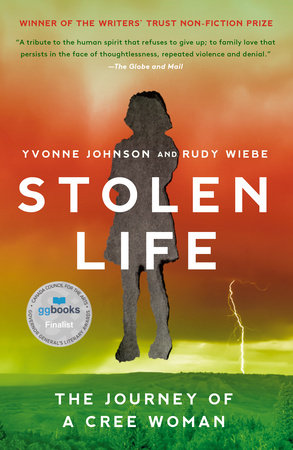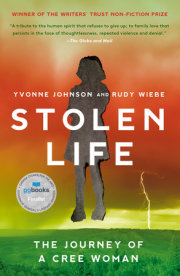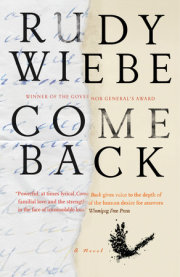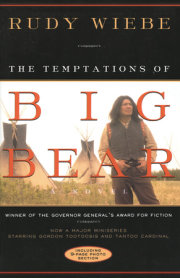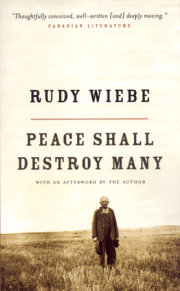Prefatory NoteThis book is based on what Yvonne Johnson holds to be her own truths about the life she has lived. However, since there is never only one way to tell a story, other persons involved in this one may well have experienced and remember differently the events and actions here portrayed. The book is also based on my research into the circumstances of Yvonne’s life. Besides over five years of dialogue with her, this research involved travel to various places crucial to the story; interviews wherever possible; attendance at trials; and the gathering of data from court, police, government, school, and newspaper records in both Canada and the United States.
I have gathered together Yvonne’s words, as given in the present text, as she and I agreed, from various sources: largely her seventeen black prison notebooks, her letters to me, her comments on official records and documents, her statements to police, my notes of our conversations in person or on the telephone, numerous audiotapes. She has a natural gift of language, which at any moment will follow a detail and widen into incident, story, often humour. This was at first sometimes confusing, even disorienting, until I recognized that her thinking was often circular, revolving around a given subject, and her writing almost oral in the sense that I had to catch the tone of her inflection to understand exactly how the incidents she was remembering connected; where the expanding images or even parables with which she tried to explain herself were leading. These qualities can only be fully appreciated when talking with Yvonne face to face, but I hope this book will give its readers a good flavour of such a conversation.
What is remarkable and enlightening is how Yvonne’s powers of writing have expanded during her time in prison. Her first letter to me (November, 1992, quoted at length in the first chapter) was as chatty as her talk still is; her formal education could, at best, barely be called erratic and ended in Grade Eight, but even in the earliest of her writing that I have seen she had a profound ability to capture an astute perception with words. For example, during her trial in March, 1991, she handed to her lawyer a long analysis of a relative, which included this comment:
“She is a woman of many faces. . . . You know, the only feelings you get from her is one of her faces. One of her strong feelings is fear, anger. And she has a tongue like a knife in your heart.”
Reading has helped her think and write. By 1998, after years of reading widely and deeply–including the works of Carl Jung, some of whose books she read and re-read while making copious notes–and thousands of pages of writing–by pen, typewriter, computer–Yvonne’s imagistic insights have widened into longer, much more coherent explorations and descriptions. The written language of her perceptions and her natural oral story-telling ability have grown immensely, to become acute, distinctive, and often beautiful.
The selection, compiling, and arrangement of events and details in this book were done in a manner the two authors believe to be honest and accurate. Public documents are quoted selectively, but with every attempt at fairness and accuracy.
The actual names of people are used when their identities are a matter of public record; for others, and in the case of all persons at present minors, the names are pseudonyms. Also, the spelling, punctuation, and grammar in Yvonne’s letters and notebooks have been standardized.
— Rudy Wiebe, Edmonton, April 1998***
O Creator of all, I pray you, look at me, for I am weak and pitiful.
I pray,
help me to make amends to all those I have harmed;
grant them love and peace, so that they may understand I am sorry;
help me to share my shame and pain, so that others
will do the same, and so awaken to themselves
and to all the peoples of the world.
Hai hai
Yvonne Johnson, Okimaw Ohci Healing Lodge, April 1998***
1
Blood Runs
Thick and Long
and For Ever
Nothing just happens, my friend, unless it was meant to be. . . . If we are guided under the Bear, then even our futures can be changed. . . . You and I may have been chosen long ago to meet, and our past has given us each a gift of understanding.
— Yvonne Johnson to Rudy Wiebe, 24 December 1992To begin a story, someone in some way must break a particular silence. On Wednesday, 18 November 1992, in Edmonton, Alberta, I received an envelope from Box 515, Kingston, Ontario. Inside, folded into quarters, was a long sheet of paper typed from top to bottom, edge to edge, solid with words on both sides. It began:
Howdy Howdy Stranger
My name is Yvonne Johnson. I am currently an inmate at the Prison for Women in Kingston, Ontario. I am thirty-one years old. I am a Cree from Saskatchewan, that is where my ancestors come from. We were accepted back into my grandmother’s rez after my mother was kicked out for marrying my father, who is a White from Great Falls, Montana. My grandmother Flora was a Baptiste, my grandfather was called John Bear, I lost him a few years back now; and my grandfather’s grandfather was the Cree chief Big Bear.
On either side of the straight Saskatchewan road, the lines of barbed-wire fence try to square the land into right angles on the curving earth. The land is white here in January 1996, prairie-snow flat, and on this morning frigid fog hides the world; I can see nothing of sun beyond the fence. At the road crossing, where I feel the pavement end, I stop, turn right, and drive south–the Cree direction of the Law of Order, which is the natural order of Creation, the order of how things will happen. I need that today: order.
The road disappears ahead into limitless mist, slopes down a little and east, then straight south again, with all the land now rising about me. Gravel clatters, swerves. White-tailed deer feed above brush on the bare shoulders of a ravine; they will look up only if I stop, probably scatter if I get out, so I continue moving, very slowly. The temperature is twenty-two below, but the deer are spaced delicately at ease, heads bowed to their feeding scrawls in the snowy earth, and when the ravine hides them again I continue my watch into the grey mist, into its brightening; waiting. And then, imperceptibly, the high hills begin to emerge.
They are very nearly upon me, their folded shapes covered with hoar-frosted trees, the mass of the Cypress Hills like immense, furry animals kneeling down tight together, brilliant as spun glass against the sudden blue sky.
The road ahead vanishes again down into mist, then reappears once more, higher, like a question mark up into the hills.
The Stoney people called them pa-ha-toonga, the Thunder-Breeding Hills.
–
The “Howdy Stranger” letter continued:
I was accepted by the Red Pheasant Reserve south of Battleford, but I do not know where I truly belong. As you may be aware, in 1885 my family and band were spread all over this continent after the imprisonment of Big Bear. I don’t know where to start, or where to go from here, but I have a will and hopefully you can help to guide me somehow. I have been through a lot in the last few years. I don’t have that much education, just what I’ve learned or I think I’ve learned over the years. I try to fake it a lot; sometimes it works, sometimes it doesn’t [. . .].
Well, once again, I am thirty-one and mother of three children and a stepson. I was born in a place called Kalispell, Montana, and raised in Butte, Montana. My brother was killed by the cops there when I was nine and my family, or what of it we had, went all to hell. My mom went on the aim [American Indian Movement] march from Wounded Knee to Washington in 1972 to see if she could get anything done about my brother’s death, but came back empty and soon filed for divorce and said she was going back to her people. I stayed with my father, as no one else would and I could not leave him alone like that. All the other kids, minus the one brother who was in prison, went with my mom to Canada. Me, I was pulled back and forth a lot, as I am born with a cleft palate and lip and only in the United States would the Crippled Children’s Fund pay for the repair I needed. I had a hard life and it keeps getting harder. I think it’s a deep sense of true justice and understanding and of true knowledge I search for that keeps me going.
And believe me, death seems a lot easier and a lot less painful at times, but I guess I truly am a sucker for punishment. What can I say? I still hang in. Well, I just wish my life would change for the better at some point. I don’t want to die this way, with nothing settled or overcome. I need to fight, I need to know where I come from and why our race suffers so from the hands of my White brothers. Just because I went through my first thirty years in silence does not mean I went through it blind and deaf as well. If anything, my silence enhanced my keen sense of observation–had to get the dictionary out for that one. All my luck, I probably copied it wrong! . . .
My mom’s a Cree from a residential school in Sask.; my father is a ex—U.S. Marine of the Norwegian race. My dad was out of the war for a short time when he met my mom, who had also just got out of a hell of her own, the Indian school. Quite a combo, hey? There were seven kids in my family. Anyways, I don’t hold it against them; they tried as best as they knew how. And I love them. I just hate reality, it’s so cruel and unkind. But I hold history responsible for that as well. You see, I’ve spent the last thirty years running from it, but due to imprisonment I was forced to stop running, and that’s so hard.
Copyright © 1999 by Rudy Wiebe & Yvonne Johnson. All rights reserved. No part of this excerpt may be reproduced or reprinted without permission in writing from the publisher.

